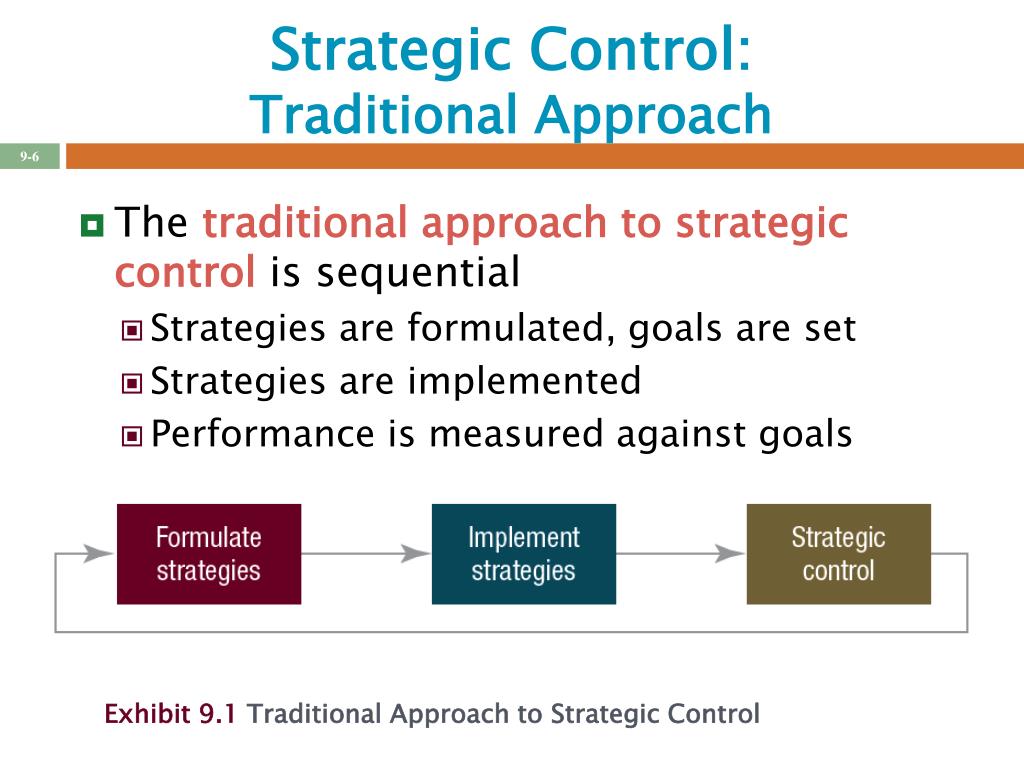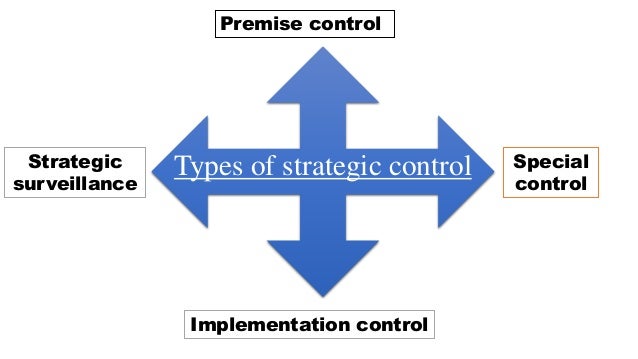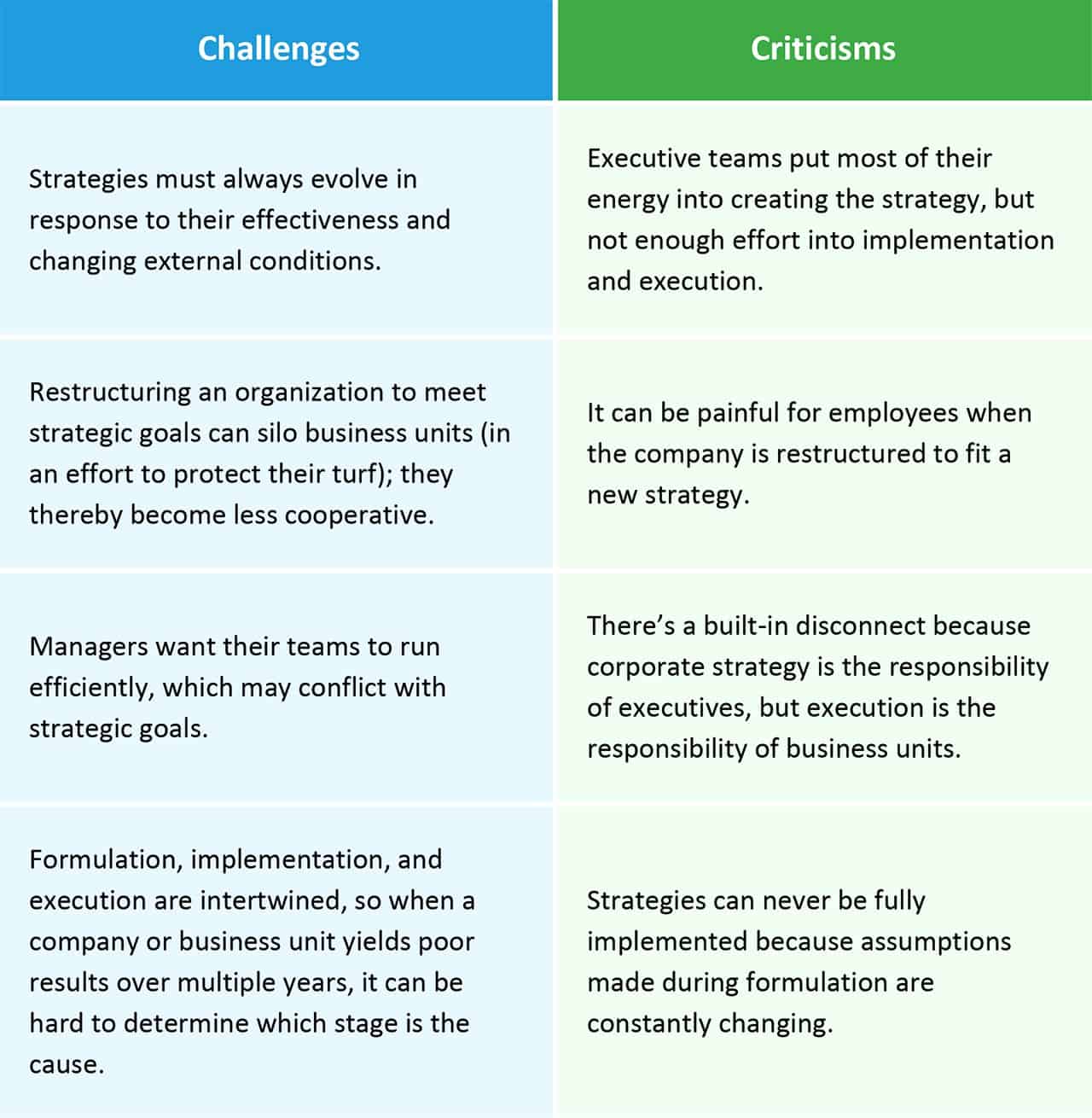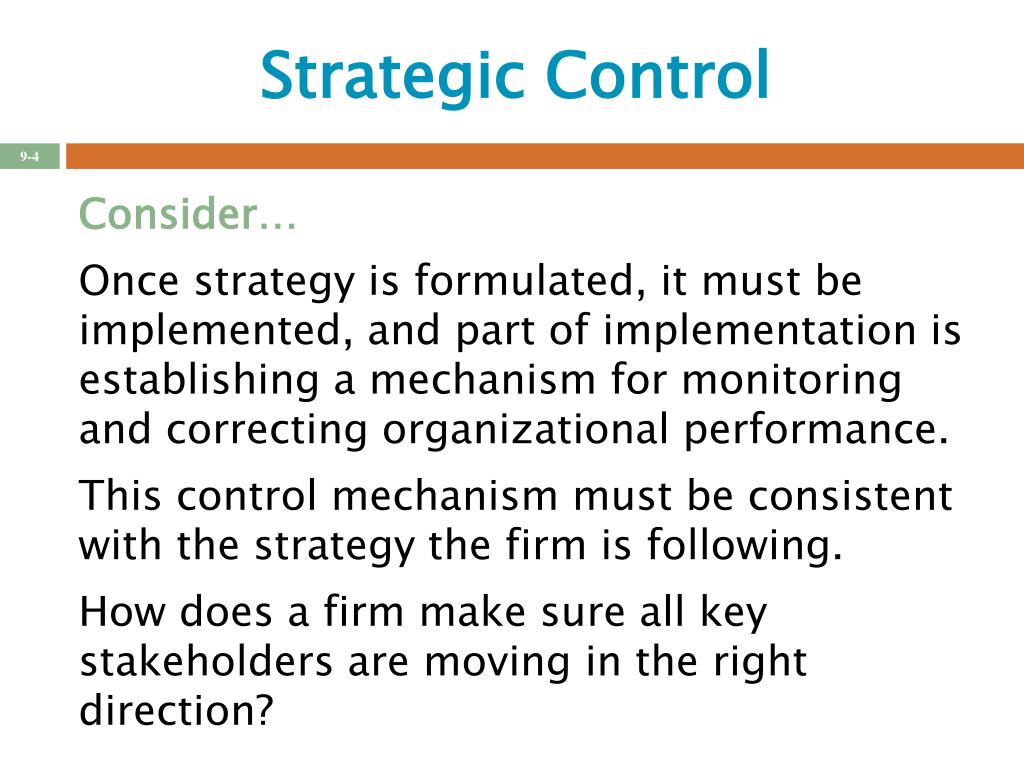Strategic Cantrol Presentation
| Introduction to Strategic Control | ||
|---|---|---|
| Strategic control is a crucial process in managing and evaluating the implementation of an organization's strategy. It involves monitoring and measuring the progress of strategic initiatives. The main goal of strategic control is to ensure the alignment of actions with strategic objectives. | ||
| 1 | ||
| Types of Strategic Control | ||
|---|---|---|
| Long-term control: Focuses on the overall direction and long-term goals of the organization. Operational control: Deals with day-to-day activities and ensures efficient use of resources. Performance control: Evaluates the performance of individuals, teams, and departments against set targets. | ||
| 2 | ||
| Key Elements of Strategic Control | ||
|---|---|---|
| Setting clear objectives: Clearly defining goals and objectives is essential for effective strategic control. Monitoring progress: Regularly tracking and assessing progress against established targets. Taking corrective actions: Identifying deviations and taking necessary actions to realign activities with strategic goals. | ||
| 3 | ||
| Tools and Techniques for Strategic Control | ||
|---|---|---|
| Balanced Scorecard: Provides a comprehensive framework for measuring performance across different perspectives. Key Performance Indicators (KPIs): Specific metrics used to evaluate the performance of critical activities. SWOT Analysis: Helps identify strengths, weaknesses, opportunities, and threats to make informed strategic decisions. | ||
| 4 | ||
| Challenges in Strategic Control | ||
|---|---|---|
| Lack of alignment: Misalignment between strategic goals and operational activities can hinder effective control. Inaccurate data: Reliance on inaccurate or incomplete data can lead to faulty decision-making. Resistance to change: Employees' resistance to change can impede the implementation of strategic initiatives. | ||
| 5 | ||
| Benefits of Effective Strategic Control | ||
|---|---|---|
| Improved performance: Effective control ensures that actions are aligned with strategic goals, leading to improved performance. Enhanced decision-making: Accurate monitoring and evaluation enable informed decision-making in real-time. Increased adaptability: Strategic control allows organizations to adapt to changing market conditions and stay competitive. | ||
| 6 | ||
| References (download PPTX file for details) | ||
|---|---|---|
| David, F. R., & David, F. R. (2020). Strategi... Kaplan, R. S., & Norton, D. P. (1996). The ba... Hitt, M. A., Ireland, R. D., & Hoskisson, R. ... |  | |
| 7 | ||





